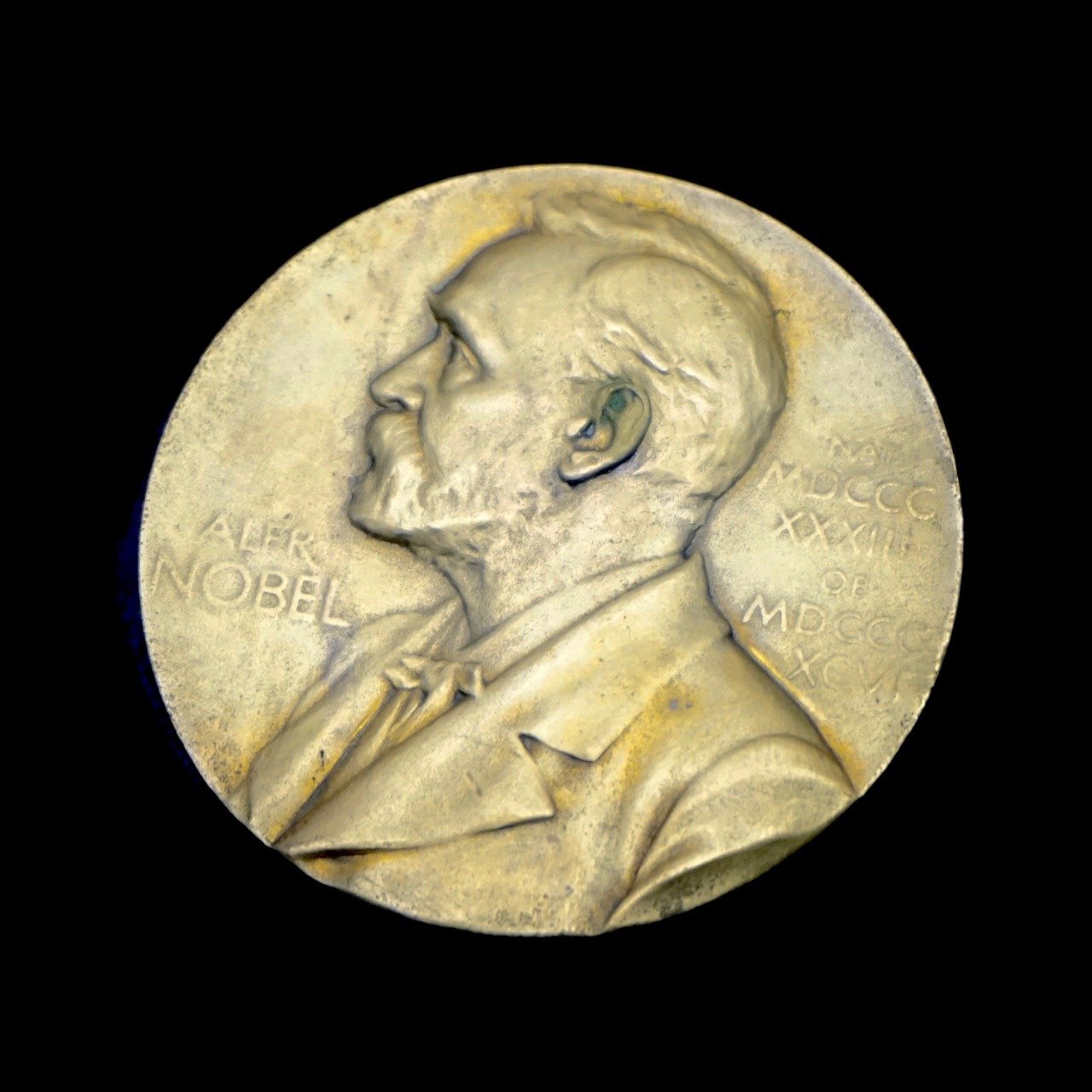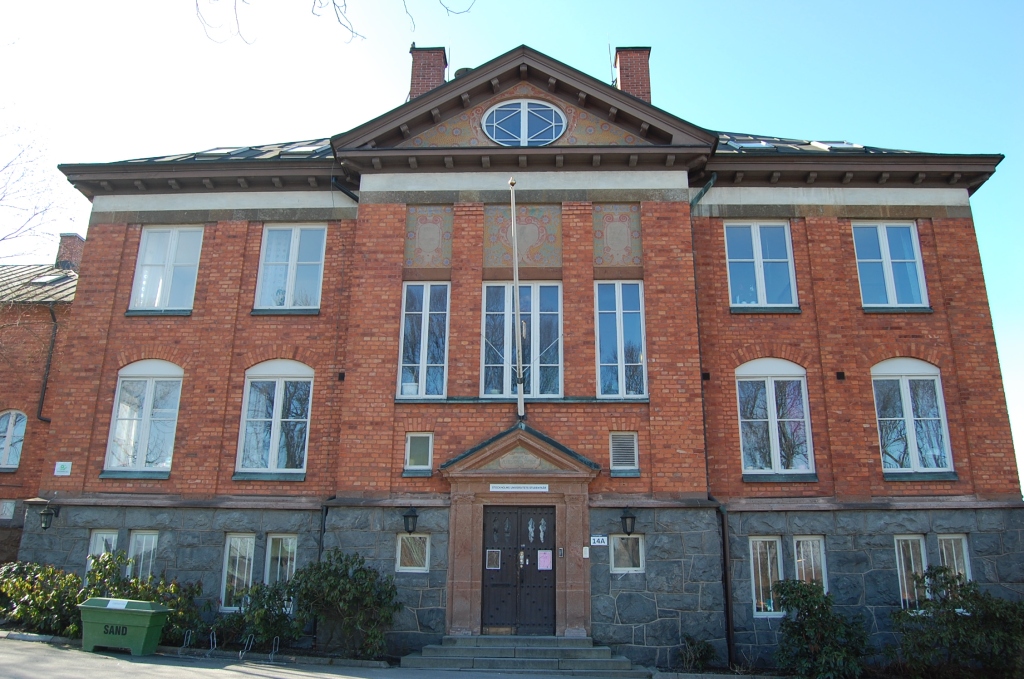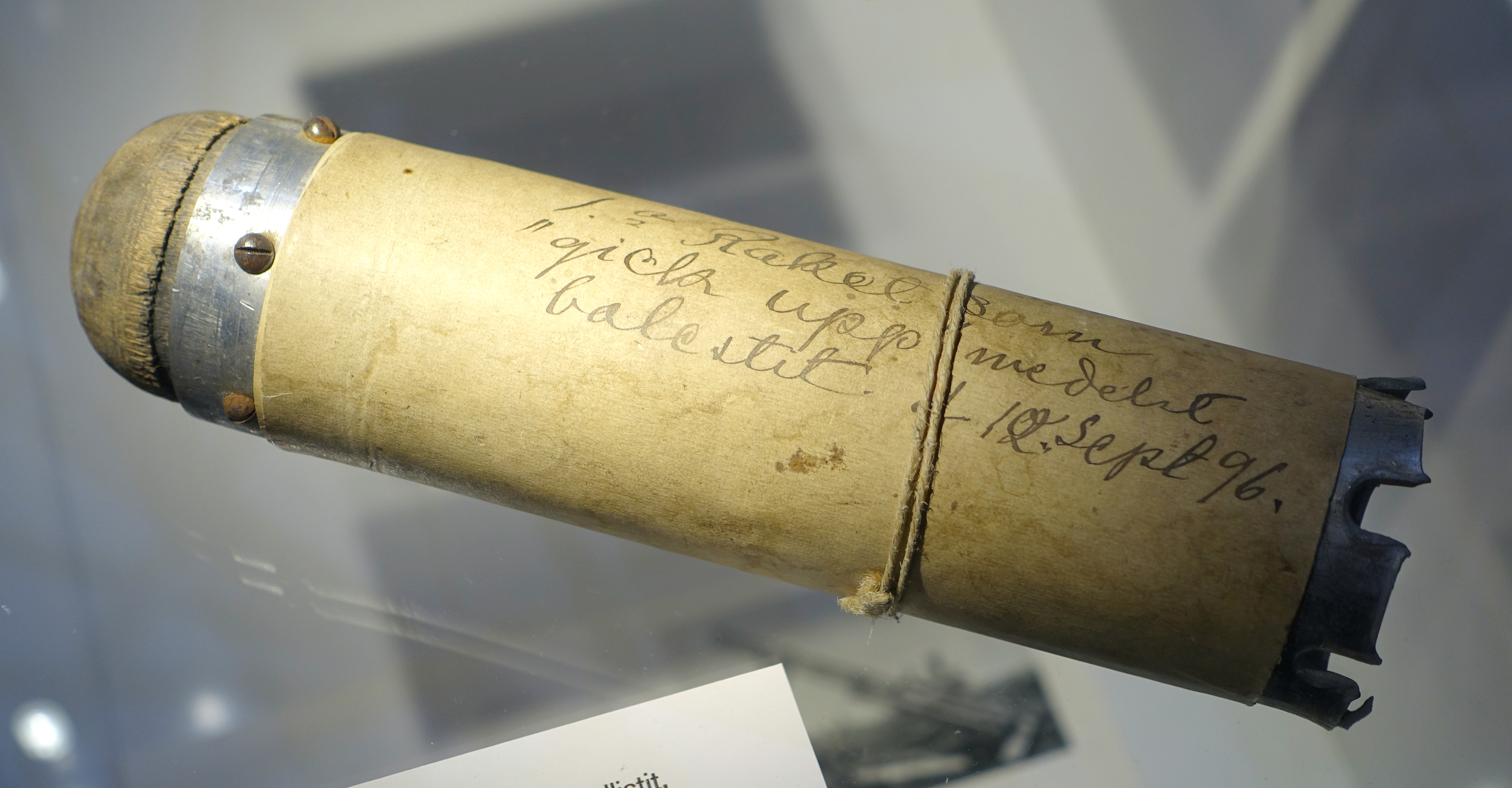

Left: the Nobel Prize, depicting Swedish chemist Alfred Nobel (from Wikimedia Commons). Right: nobelium as it appears in the periodic table.
When people think of famous chemists, there are certain names that come up (I think). We’ve already covered Marie Curie so we’ll go to the other big chemist- Alfred Nobel. Therefore when it comes to naming superheavy synthetic elements, nobelium was inevitable. Nobelium has (like all its friends at the bottom of the periodic table) very little use outside research, and is radioactive, with the most stable form of nobelium having a half-life of just under an hour. But this is a chance to talk about Alfred Nobel and his prize, so here we go.
Also like other superheavy elements, nobelium’s discovery was controversial and involved several competing research groups. Interestingly however, it was Sweden who was the first to announce creation of element 102 in 1957 rather than the US or Soviet Union. They had bombarded curium with carbon ions for just over a day, during which they claimed to have detected the new element. They proposed the name nobelium after Alfred, and IUPAC very quickly approved the discovery and name.
This led to some arguments amongst Sweden, the United States and the Soviet Union. The American team could not repeat the experiments that the Swedes performed, and the Soviets declared IUPAC’s decision as “hasty”. After attempting to address the US failure to repeat the experiments, eventually Sweden caved in to increasing evidence that they had detected thorium instead of element 102 and retracted their discovery claim. A similar story occurred in 1958 where the Americans this time tried to claim producing element 102. They too bombarded curium with carbon ions, but arguments over the half lives of the atoms produced combined with subsequent decades of research showed it was more likely that fermium was instead produced.

The three countries continued to attempt, discuss and argue over the creation of element 102, but it was the Soviets who got the most conclusive evidence of creating it in 1966. They achieved it by bombarding uranium with neon ions, and despite the US still claiming they had succeeded earlier, IUPAC acknowledged in 1992 that it was a Soviet discovery. The name nobelium had been used in scientific literature throughout this time, so when IUPAC was trying to resolve the naming controversy in the 90s, nobelium was once again officially acknowledged.
But enough about squabbling physicists, what about Alfred Nobel? Well Alfred was a Swedish chemist, famous for inventing many different forms of explosive, including dynamite (which incidentally comes from the Ancient Greek for “power”), blasting gelatine or gelignite, and a smokeless powder explosive called ballistite. These explosives came from Nobel’s figuring out how to safely handle the incredibly explosive chemical nitroglycerin, meaning that explosives could be transported safely and manually detonated. In fact, Nobel had 355 different patents, and was a successful businessman with plenty of wealth.



Nobel’s explosive creations, from left to right: dynamite (from Pixabay), gelignite (from Learnodo Newtonic), and ballistite (from Wikimedia Commons).
But Nobel had a bit of an epiphany about his legacy, and it is apparently due to a mistaken French obituary. When Nobel’s brother Ludvig passed away in Cannes in 1888, a French newspaper accidentally published Alfred’s obituary. Now on top of his brother’s death AND seeing your own obituary in the paper, Nobel also saw what kind of impact he had on the world. The rather brutal obituary was titled “Le marchand de la mort est mort” (the merchant of death is dead), referring to the use of his explosives in military applications. The article continued: “Dr. Alfred Nobel, who became rich by finding ways to kill more people faster than ever before, died yesterday”. This led Nobel to have a bit of a crisis of legacy, and subsequently he changed his will in 1895 to dedicate most of his estate and wealth (which equated to around 3.1b Swedish Kronor, or £274m) to creating the “Nobel Prizes”, a series of prizes that are awarded “to those who, during the preceding year, have conferred the greatest benefit to humankind”. Nobel set up 5 separate prizes for this- Physics, Chemistry, Medicine/Physiology, Literature and Peace. The winners received a diploma, a medal and a financial award, which still occurs today with the winners receiving just under £900,000 in 2020. The first Nobel prizes were given out in 1901, 5 years after Nobel’s death, and with it he succeeded in changing his legacy to something more positive.

And that’s nobelium- an explosive, rewarding and secretly Russian element!
